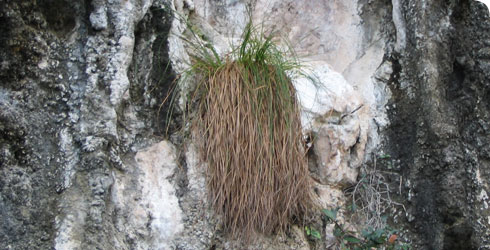Conservation
There is no information about the abundance or distribution of Khaosokia caricoides beyond the one known locality in Khao Sok National Park.
Its occurrence in a protected area, and its relative inaccessibility on limestone cliffs surrounded by water, may assist in its conservation. However, the plant has been seen in only small populations on only a few cliffs, despite apparently suitable habitats being available nearby.
It could be present in similar habitats elsewhere in Thailand and Peninsular Malaysia but is so far inaccessible to collectors. Such habitats are often threatened by human activity, especially limestone extraction.
Khaosokia caricoides may also be vulnerable to climate change. Should the climate become drier it is likely to affect the plant by reducing the amount of rainfall it receives - it is likely that rain falling directly on to the cliffs, together with associated runoff, is the only way the plant receives water. We know almost nothing about the ecological requirements of this plant and whether it could tolerate extended periods of drought.
Khaosokia caricoides comes from a part of Thailand that has yielded several new taxa in recent years, including the palm Maxburretia furtadoana and the bamboo genus Temochloa.All have been found growing in similar habitats to Khaosokia, emphasizing the richness of these limestone areas.
